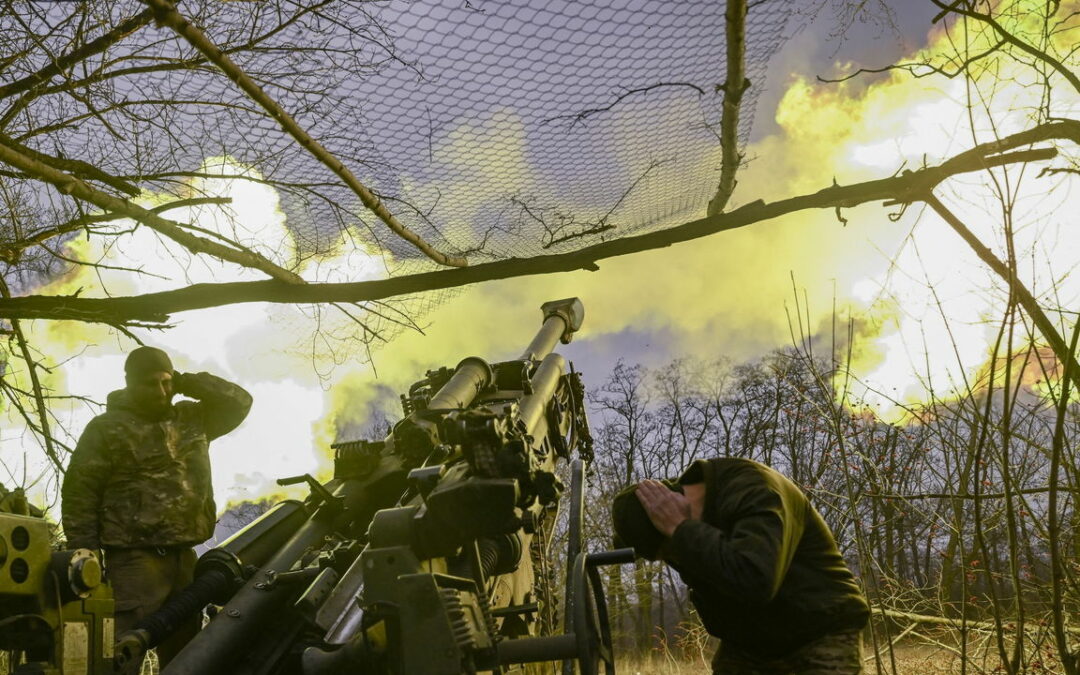HOW DO YOU stop an attack drone from delivering its payload? Loitering munitions, which are single-use bomber drones, have been deployed to lethal effect by both Russia and Ukraine throughout the war. They are cheap and nimble. As well as military-grade models, both sides are loading commercial racing drones with grenades. Customised drones like these can be produced rapidly by the hundreds. Defenders can try to jam the signals of incoming enemy craft. They can shoot them down or knock them from the skies with other drones. But sometimes the best defence is also the simplest. Both Russia and Ukraine are using nets to protect their positions. Can mesh really protect against flying bombs?
In Ukraine, the first known use of netting as a defence seems to have been a happy accident. A video from December 2022 shows a Russian Lancet drone that had fallen on the camouflage netting of a stationary Ukrainian tank without detonating. But defensive nets have a much longer history. They date back to at least the 1500s when a British warship, the Mary Rose, used them to prevent enemy sailors from boarding (when the ship sank, the nets trapped hundreds of sailors onboard). By the late 1800s nets were being used to protect against torpedo attacks from small boats. During the first world war barrage balloons, huge hydrogen-filled inflatables tethered to the ground, some with nets and wires strung between them, were used to deter enemy aircraft They forced German bombers to fly at higher altitudes, making their strikes less accurate and leaving them vulnerable to anti-aircraft fire (at lower altitudes bombers are only visible from very nearby). Barrage balloons were deployed again during the second world war. In 1944 Germany deployed V-1 unmanned bombs to strike London: they lacked sensors to detect and avoid the wires. By the end of the war the balloons had brought down more than 200 of them.
Netting is still a useful defence. Today’s attack drones are small and light. Some weigh just a few hundred grams. Russian Lancets are among the largest, at about 15kg. All are small enough to be caught by sturdy netting. The collision may cause the drone to explode at a safe distance from its target or, more often, will prevent it from detonating.
Samuel Bendett, of CNA, a think-tank, reckons that the use of nets is increasing, though it is not clear how widespread their use is. Ukrainian forces have repurposed fishing nets and chicken-wire fences and built custom metal mesh structures. Instructions for net defences are circulating on Russian Telegram channels, too, but it is not clear whether commanders have ordered their use.
Zachary Kallenborn, of the Centre for Strategic and International Studies, another think-tank, says that these nets have obvious limitations. They can protect small, stationary units like radar systems, but are not a practical way to defend large targets or moving vehicles, he says. When defensive nets were used in centuries past, counter-measures quickly followed. Some torpedoes were fitted with wire-cutting devices to slice through defensive nets. Drone makers will probably develop similar technology. And there are other ways for attackers to get around the problem: stand-off warheads, for example, are designed to detonate at some distance from a target, before a weapon can be ensnared. In the meantime, anti-drone nets provide a simple defence against a rapidly proliferating threat. They may not be foolproof, but they are better than nothing. ■









